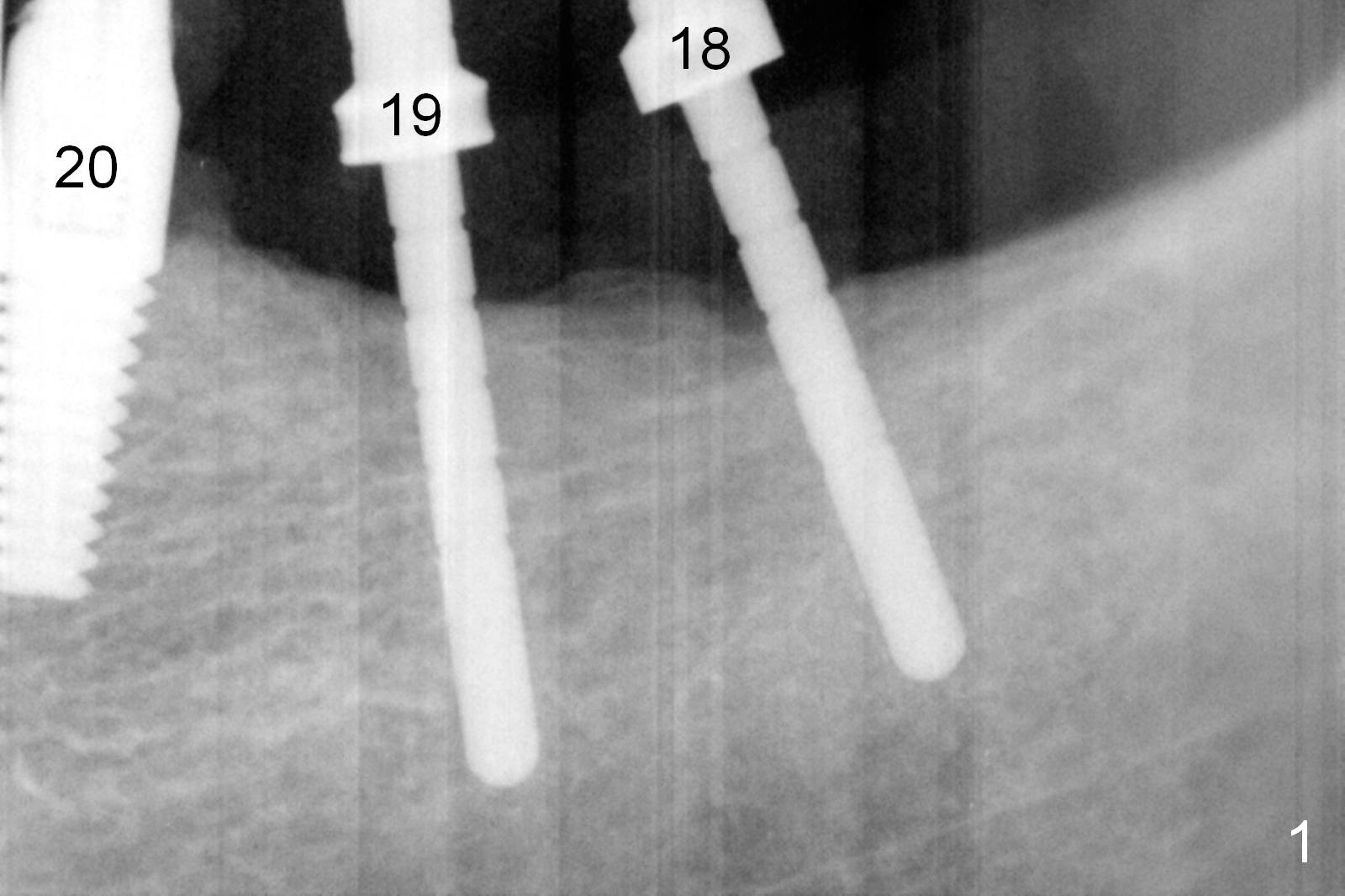
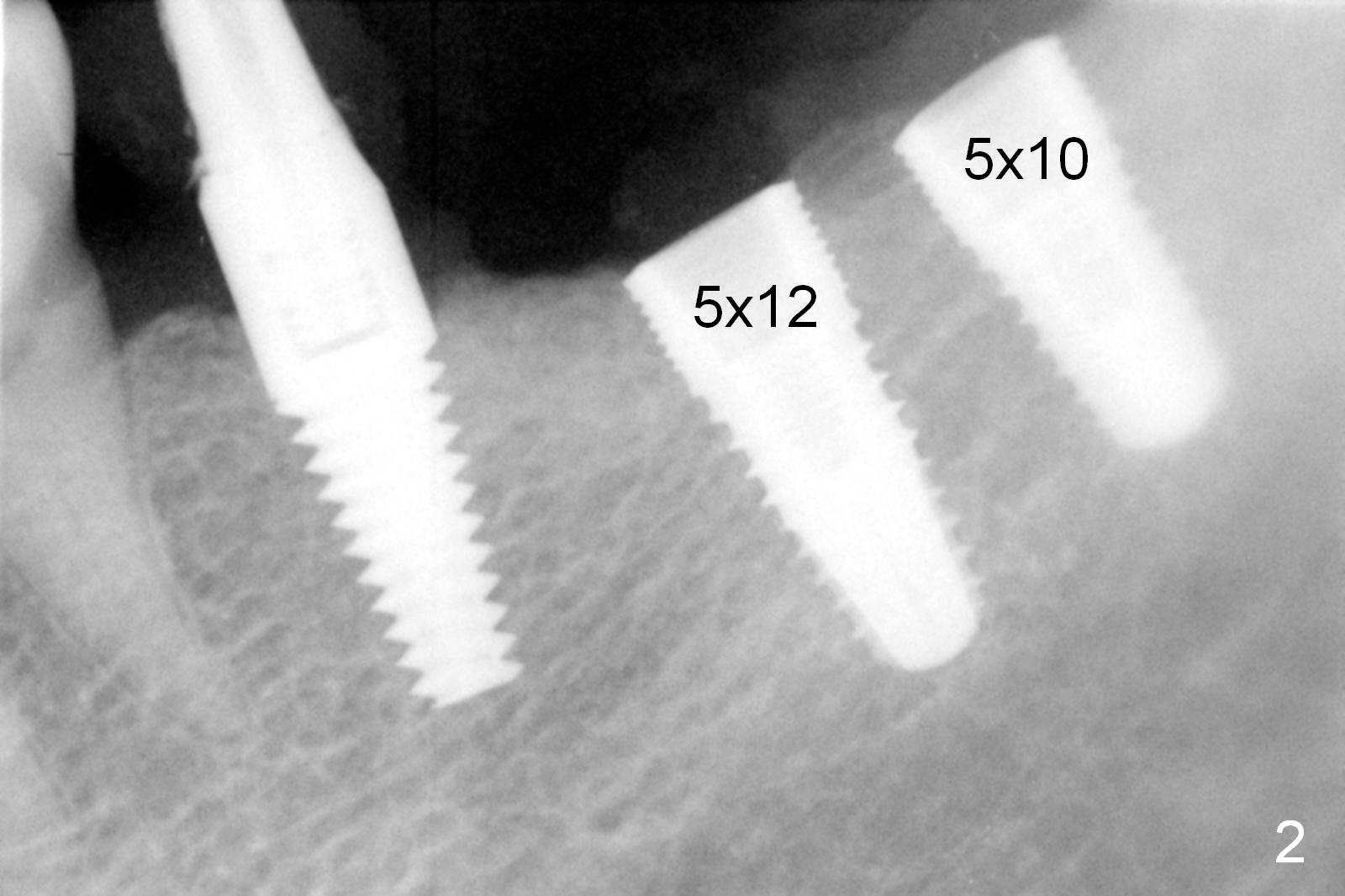
.jpg)
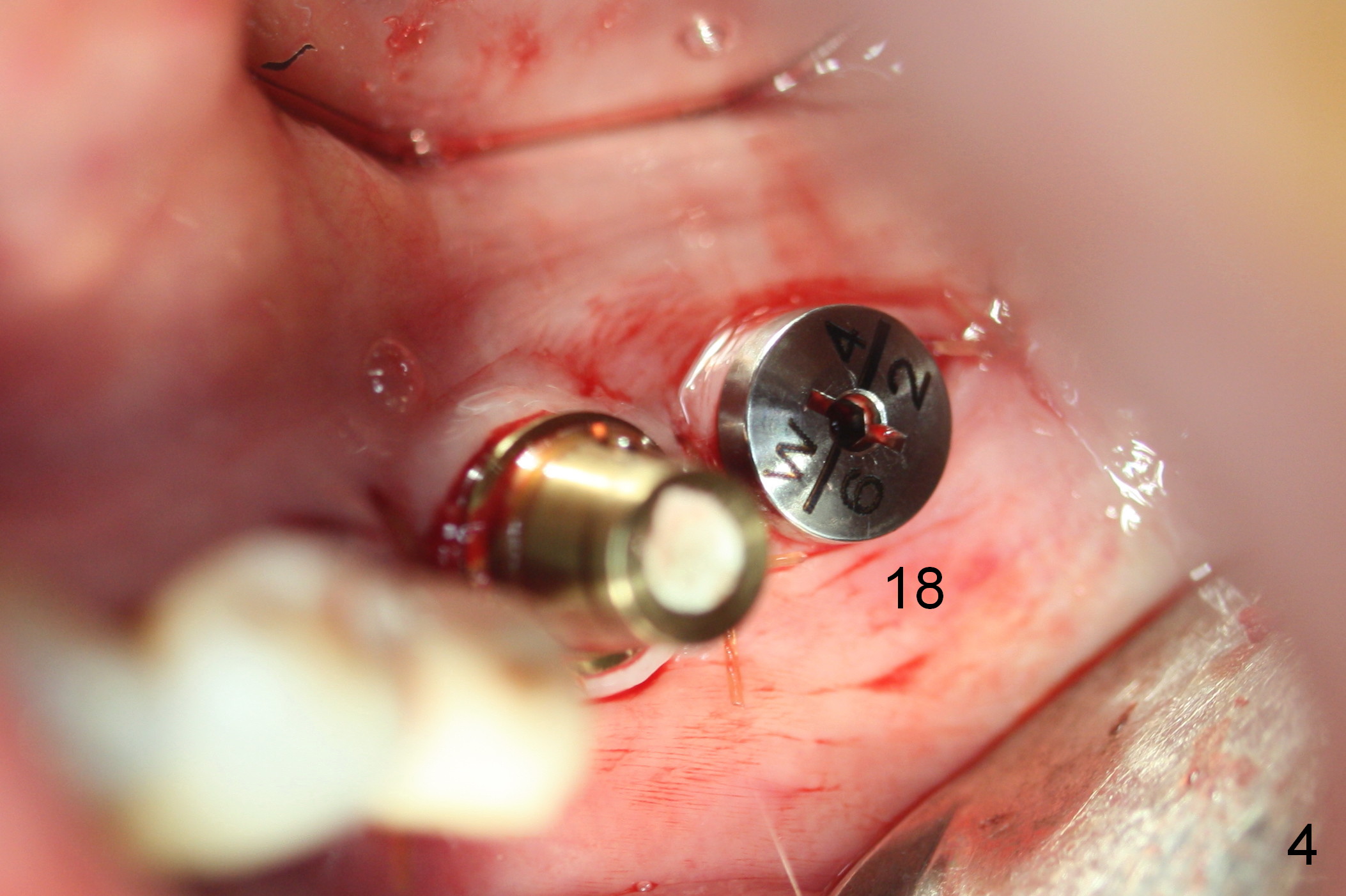
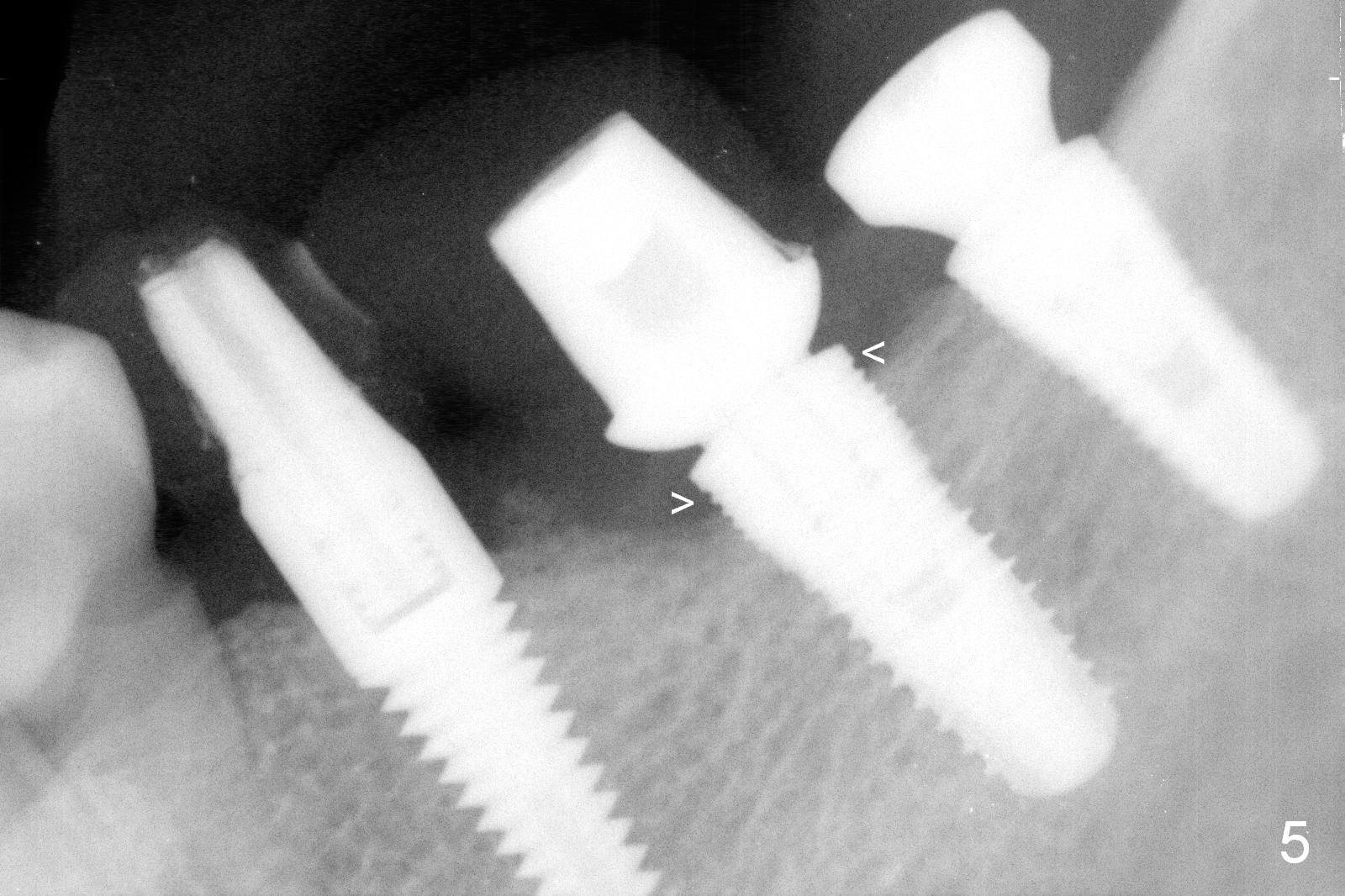
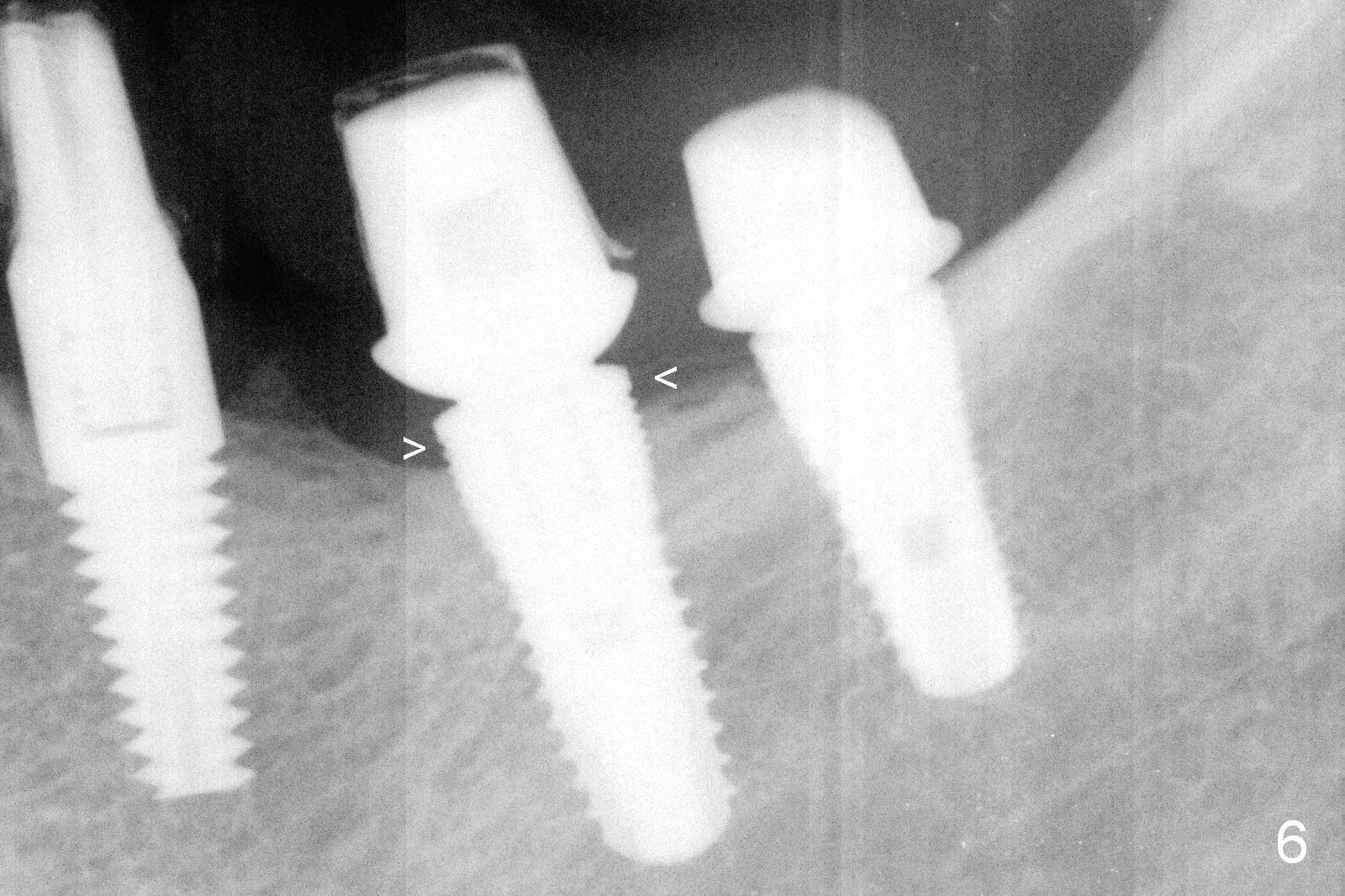
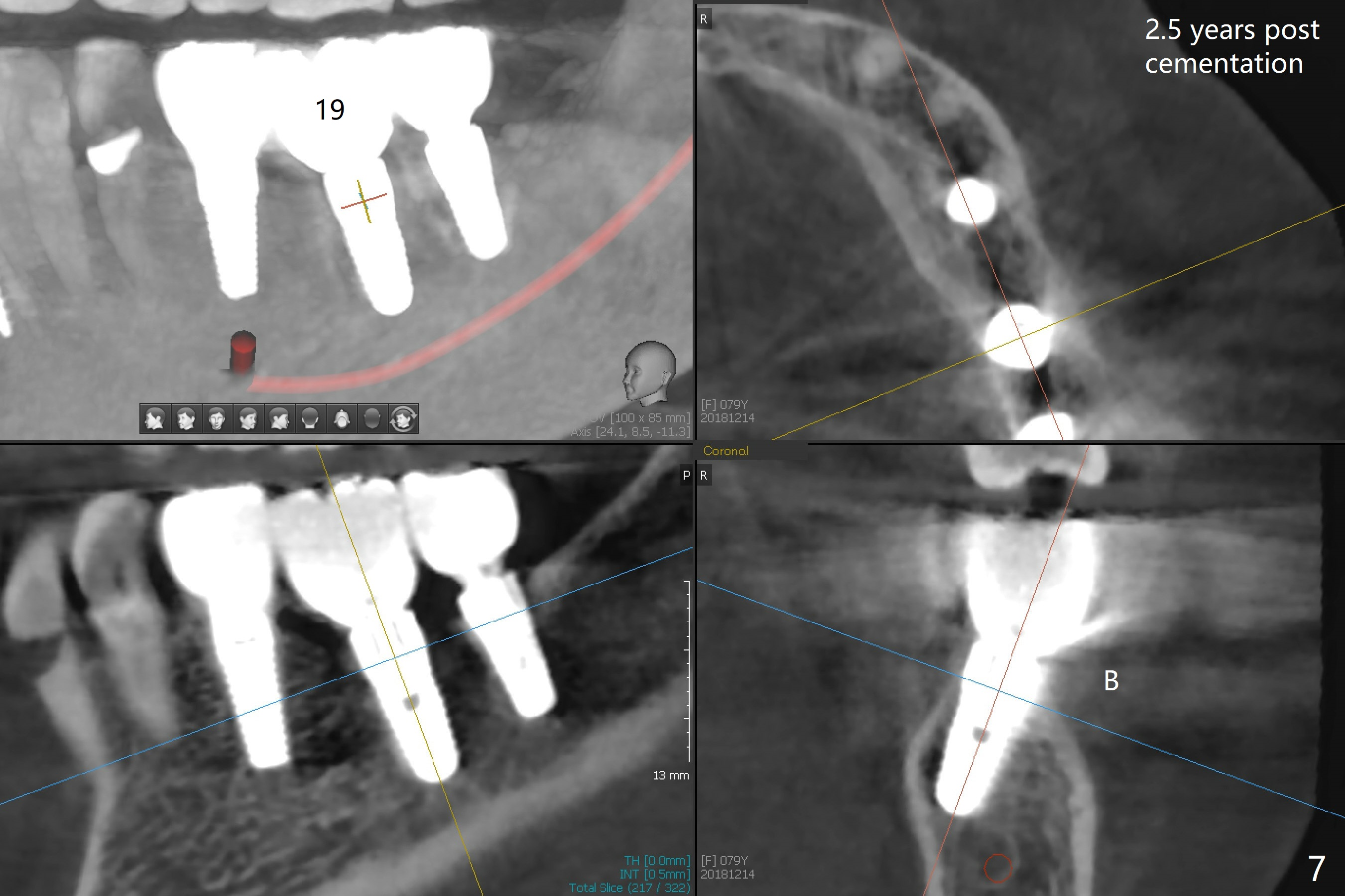
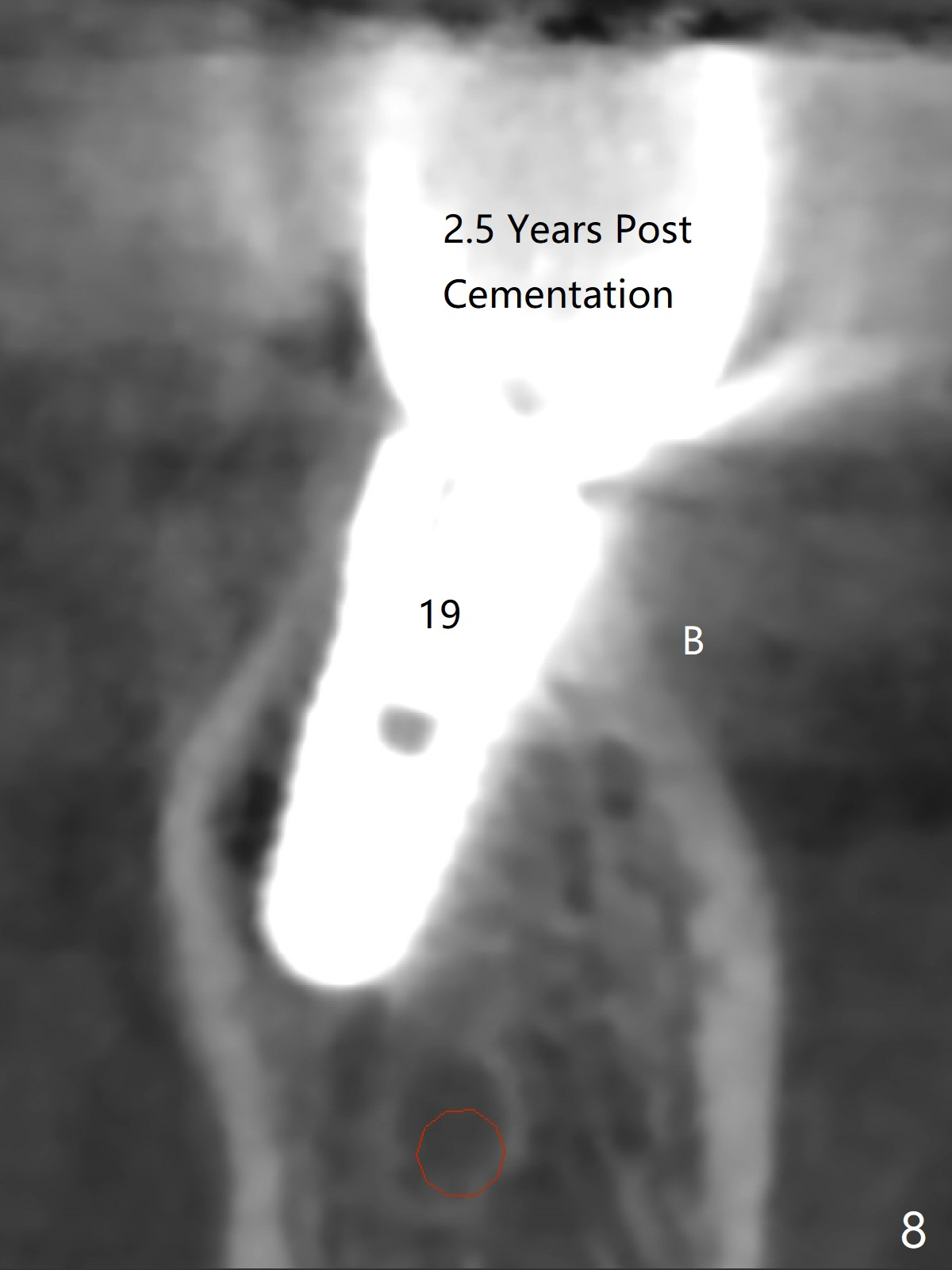
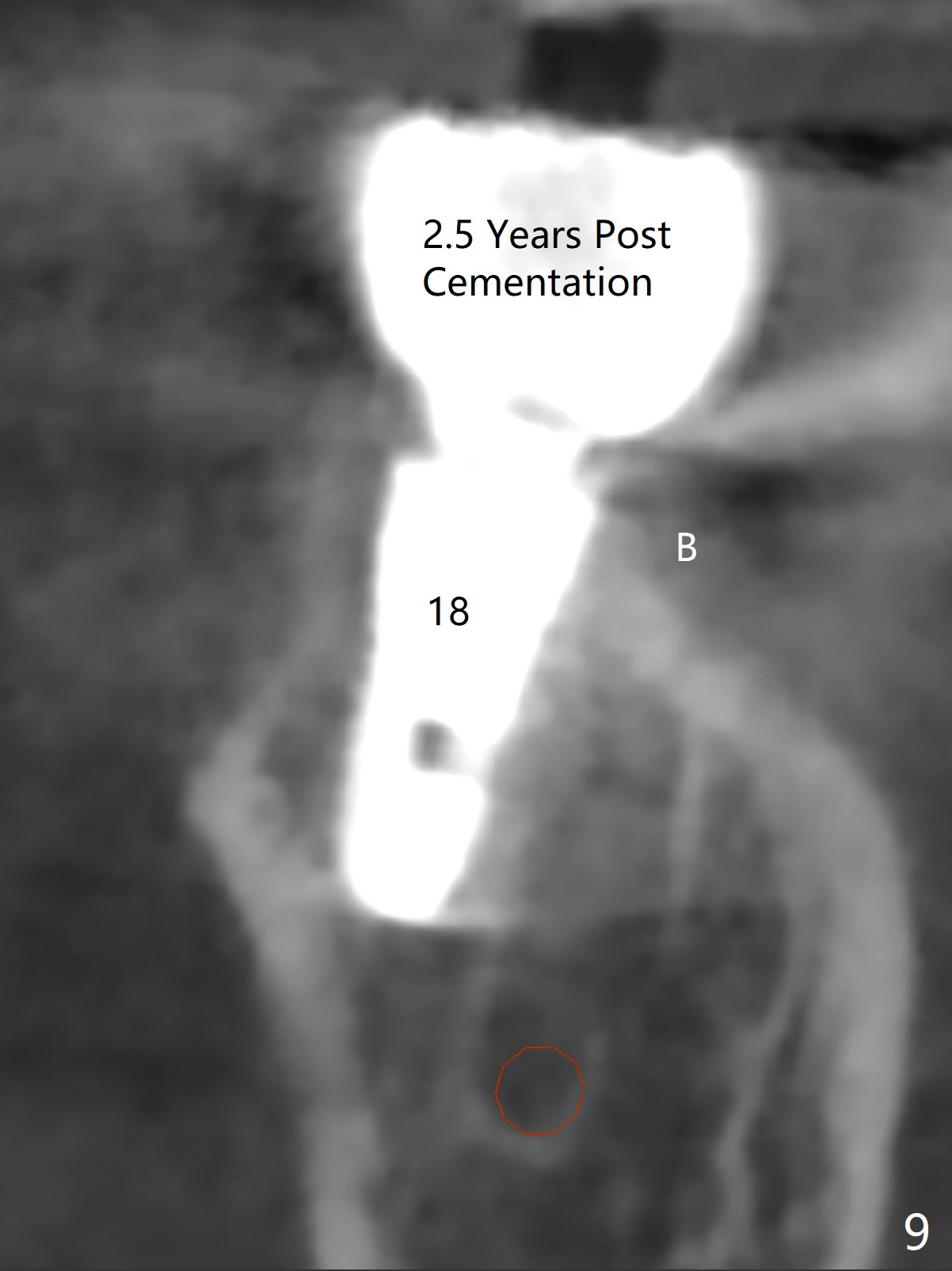
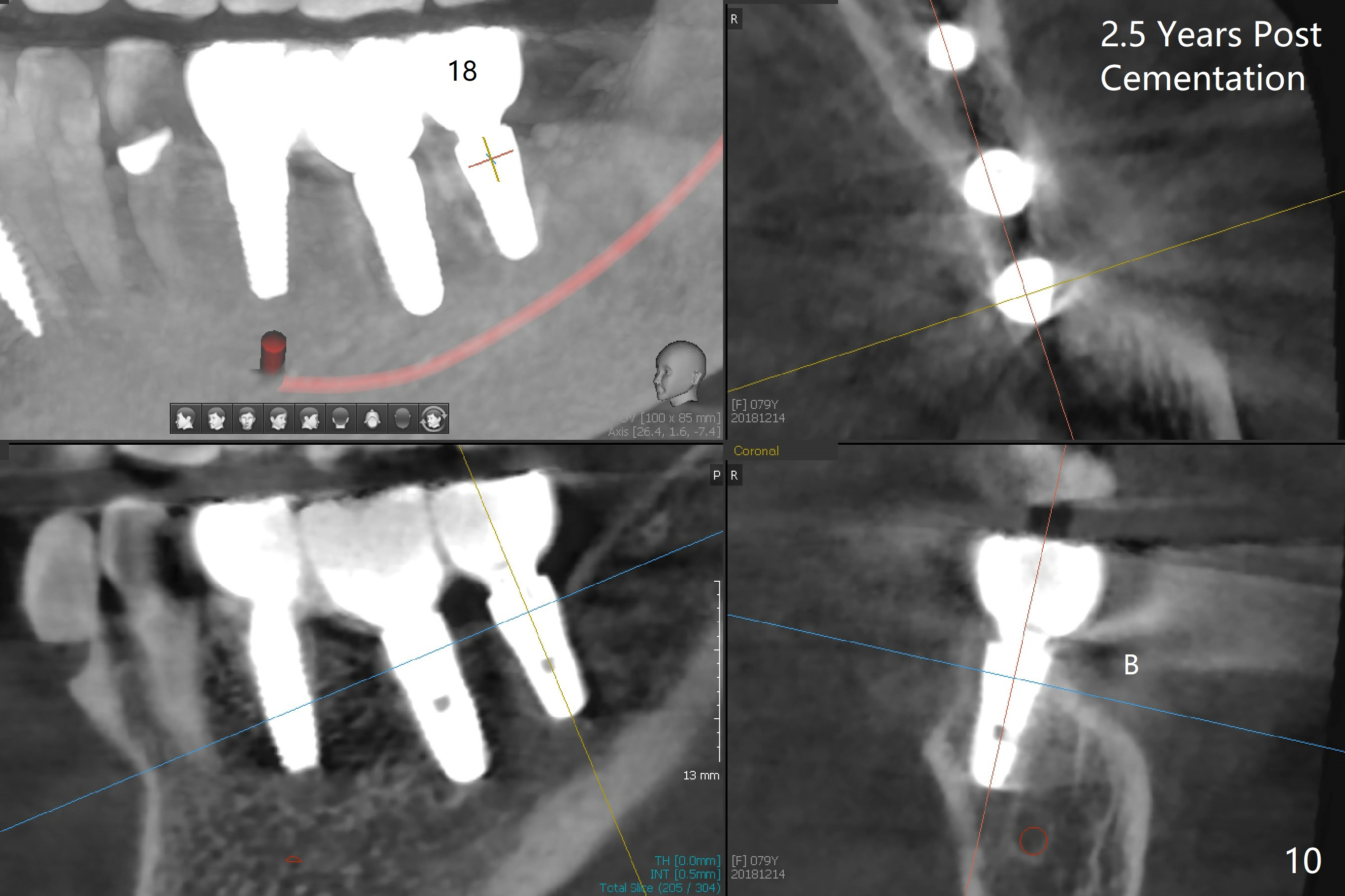
 |
 |
.jpg) |
 |
 |
 |
 |
  |
 |
Different Types of Abutments
Four months post implantation at #20, osteotomy at #18 and 19 is initiated (Fig.1). Sequential osteotomy stops one size smaller than the expected size of the implants (Fig.2): the last drills for the sites of 18 and 19 are 4.5x10 and 4.5x12 mm, respectively. Because of underprep, insertion torque for these two implants are around 55 Ncm. It would be the best to place two cemented abutments at the same time. Partially due to short stock of abutments in the office and mainly due to supraeruption of #15 (especially the mesiolingual cusp), no appropriate restorative abutment can be found at #18. So a healing abutment is placed (Fig.3,4). Periodontal dressing is applied around the healing abutment at #18 (6x4(2) mm), cemented abutment at #19 (4.8x4(3) mm) and the provisional at #20. The retention is good. The dressing will be kept in place as long as possible.
When the patient returns 8 days postop, the distolingual portion of perio dressing is loose. Then the rest is removed.
When she returns 2.5 months postop, the implants at #18,19 appear to have osteointegrated (Fig.5). A cemented abutment is placed at #18 (6.8x4(1) mm) and a splinted provisional is fabricated at #18 and 19. Bone starts to be resorbed at #19 (arrowheads).
The patient returns 8 months postop. The bone loss at #19 appears to be stabilized (Fig.6). It would be better to place a shorter implant in a deeper position. CT taken 2.5 years post cementation does not show buccal (B) or lingual bone loss at #18 or 19 (Fig.7-10).
Return to Lower Molar Immediate Implant,
Posterior Immediate Provisional 25
31
Xin Wei, DDS, PhD, MS 1st edition 08/30/2015, last revision 12/27/2018